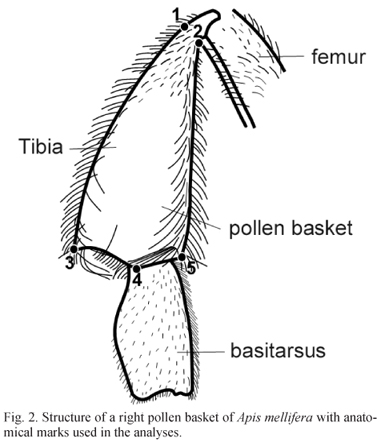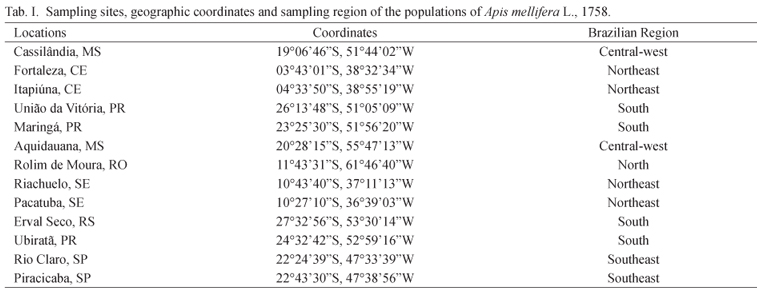The morphometrics of the honey bee Apis mellifera L., 1758 has been widely studied mainly because this species has great ecological importance, high adaptation capacity, wide distribution and capacity to effectively adapt to different regions. The current study aimed to investigate the morphometric variations of wings and pollen baskets of honey bees Apis mellifera scutellata Lepeletier, 1836 from the five regions in Brazil. We used geometric morphometrics to identify the existence of patterns of variations of shape and size in Africanized honey bees in Brazil 16 years after the classic study with this species, allowing a temporal and spatial comparative analysis using new technological resources to assess morphometrical data. Samples were collected in 14 locations in Brazil, covering the five geographical regions of the country. The shape analysis and multivariate analyses of the wing allowed to observe that there is a geographical pattern among the population of Apis mellifera in Brazil. The geographical variations may be attributed to the large territorial extension of the country in addition to the differences between the bioregions.
Population distribution; shape; wing; pollen basket






